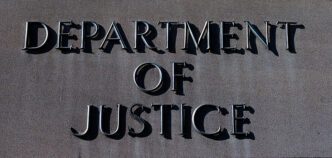Early Friday, the Texas House approved a two-year spending plan amounting to approximately $337 billion, directing significant funds towards teacher salaries, border security, and property tax cuts. The approval followed over 13 hours of debate, which saw numerous amendments from both Democrats and conservative representatives rejected. The House’s budget aligns closely with the Senate’s version, passed in March, though some amendments made on the floor will require future negotiations between the two chambers.
A notable amendment by Representative Mary González removed funding for the Texas Lottery Commission and economic development and tourism under the governor’s office, totaling over $1 billion. However, these remain funded in the Senate’s budget draft. The House’s proposal, passed with a vote of 118 to 26, allocates around $154 billion from general revenue, primarily focusing on education, health, human services, and public safety.
Despite the substantial spending plans, about $40 billion in general revenue remains unused, falling short of the $195 billion projected to be available by Comptroller Glenn Hegar. The Legislature cannot reach this figure unless both chambers agree to exceed a constitutional spending limit, a move unlikely in the GOP-controlled Capitol.
Representative Greg Bonnen emphasized the budget’s fiscal restraint during Thursday’s debate, highlighting its development through extensive public meetings and testimonies. Opposition included Representative Mike Olcott, who criticized the lack of property tax relief, and Democratic Representatives John Bryant and Gina Hinojosa, who opposed funding for school vouchers, arguing it undermines the public school system. In total, the budget faced opposition from 19 Republicans and seven Democrats.
House members proposed nearly 400 amendments, many of which were defeated or withdrawn before voting, including efforts to redirect school voucher funds towards teacher pay and public schools. Still, a few amendments were successful, such as one by Representative Tom Oliverson reallocating $70 million from Medicaid to the state’s Alternatives to Abortion program.
The House passed an amendment directing the Department of Public Safety to study religious leaders accused or convicted of child abuse. However, many Democratic proposals to expand Medicaid and increase public school funding were quashed. Ultimately, more than 300 amendments were withdrawn or placed in Article XI, while only 25 were approved.
The final budget, to be negotiated in private between House and Senate members, will need approval from both chambers before advancing to the governor, who can also veto items. The budget’s education allocation includes $75.6 billion for the Foundation School Program, with plans to raise the basic allotment for public schools.
Both legislative chambers proposed a billion-dollar allocation for a voucher program enabling families to use public funds for private schooling. This funding remained after attempts to redirect it failed. Unlike prior sessions, no amendments were filed to prevent state dollars from funding voucher programs.
The budget designates $51 billion for maintaining and introducing new property tax cuts, sparking concerns about sustainability. Recent budget surpluses have facilitated these reductions. Conservative members unsuccessfully sought further tax cut allocations, proposing to draw funds from universities and research programs.
Regarding border security, the budget assigns $6.5 billion, heightening the total spending on Operation Lone Star since its inception in 2021. Attempts to reallocate border security funds towards social services, like child care and housing assistance, were either withdrawn or defeated.
The House approved a $12 billion supplemental budget, addressing unforeseen costs and liabilities. This includes $2.5 billion for Texas’s water infrastructure, $924 million for disaster response, $1 billion for state employee pensions, and $1.3 billion for the Texas University Fund.
Understanding the Impact
The Texas House’s budget plan has several potential ramifications for residents. The focus on education funding could lead to enhanced services in public schools and possibly improved education quality. However, the debated voucher program might shift public funds away from public schools, potentially affecting their resources and infrastructure.
Property tax cuts may offer financial relief to homeowners, though there is concern about long-term budget sustainability. If these cuts compromise public services or education funding, it could impact community resources and individual financial obligations.
Significant funds for border security underscore ongoing priorities in state governance, though the allocation of resources may draw criticism from those who favor investing in social programs. Decisions made in this budget will shape Texas’s socio-economic landscape, affecting education, taxation, public safety, and more.






